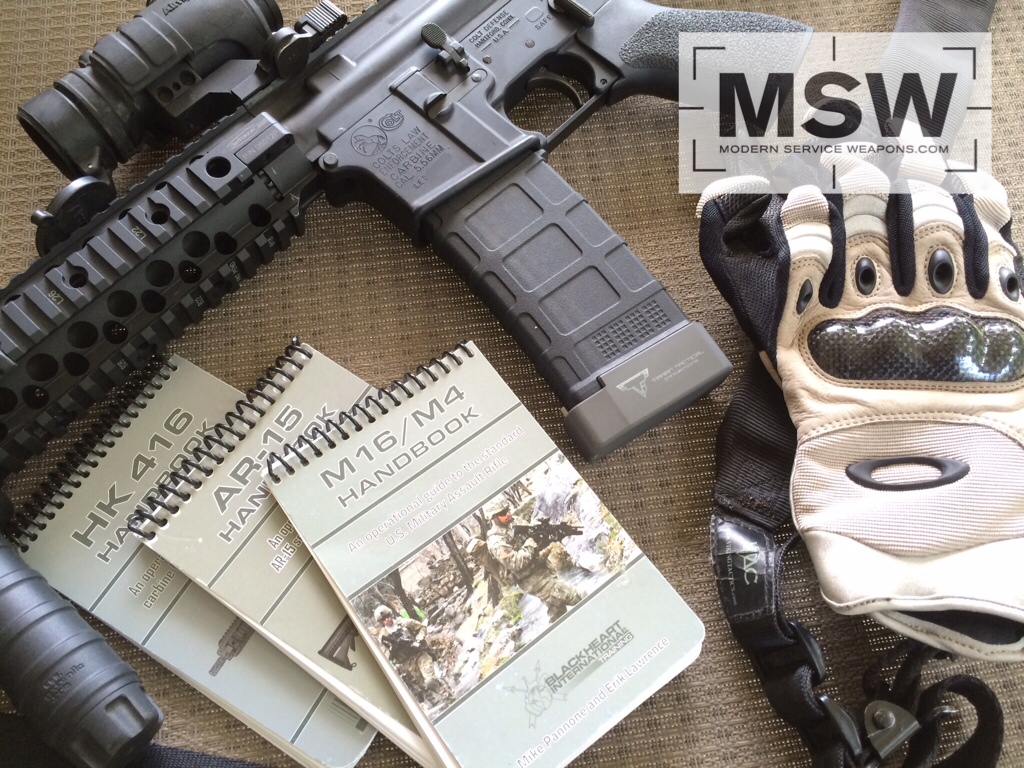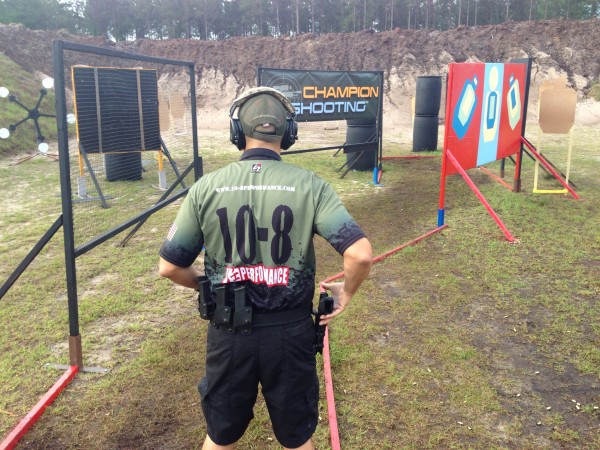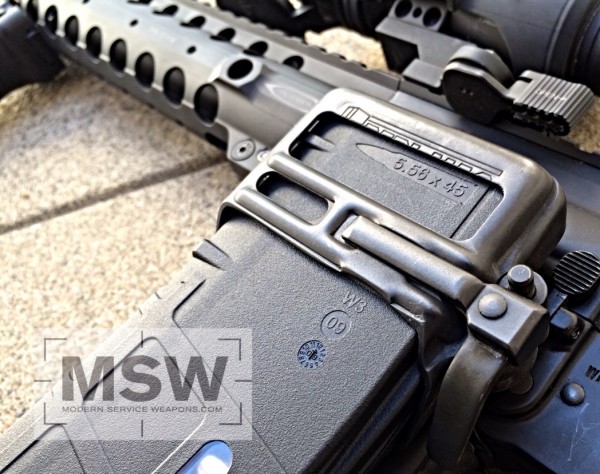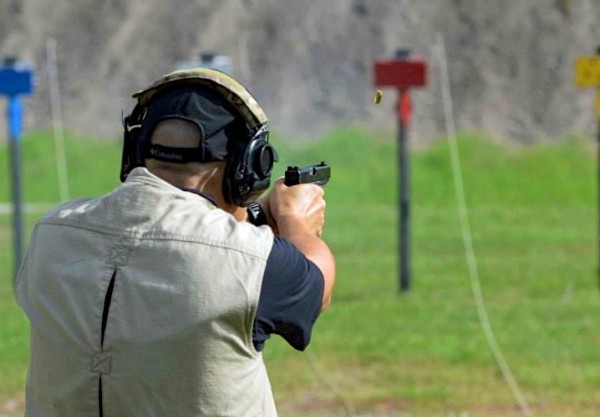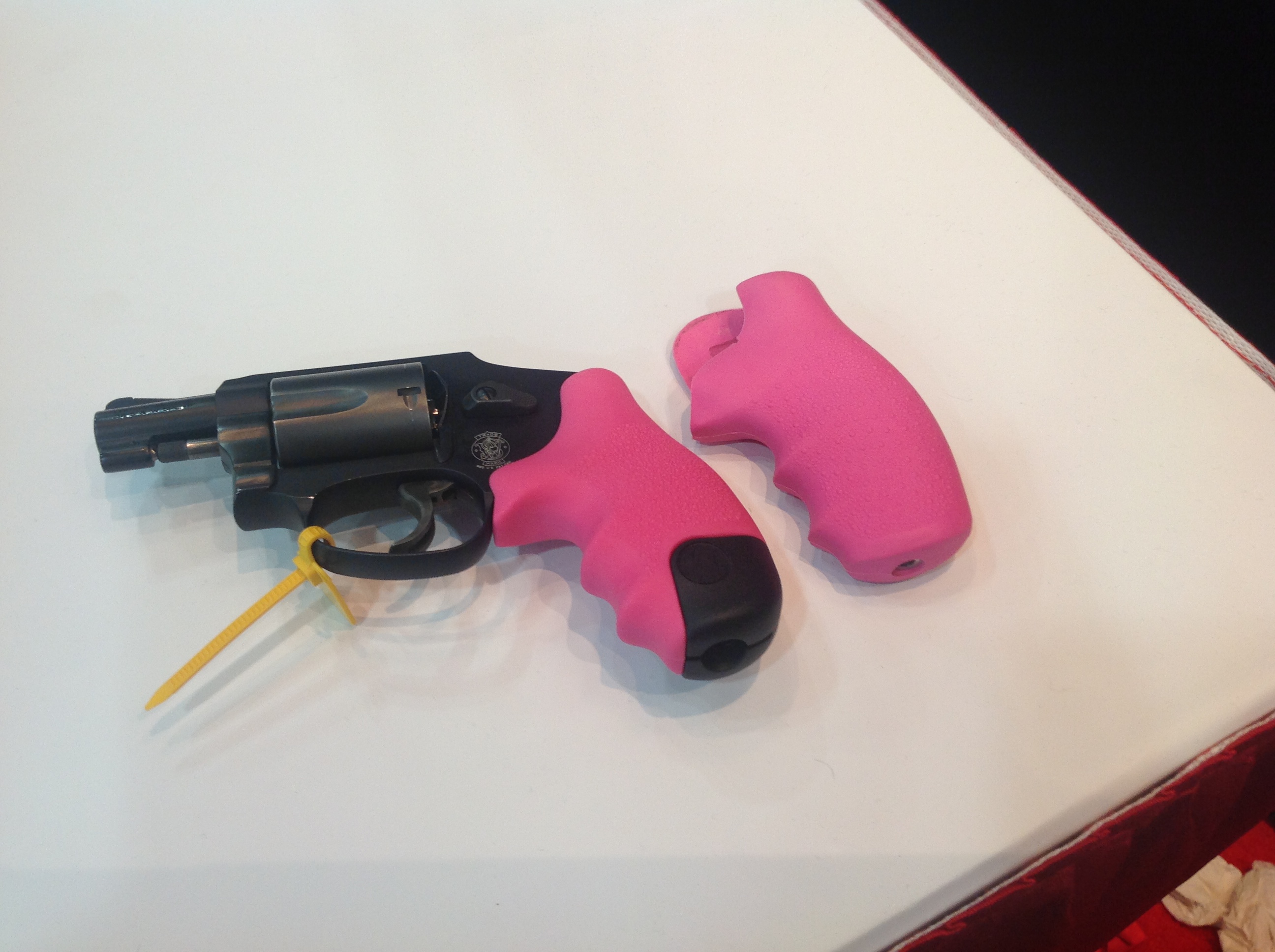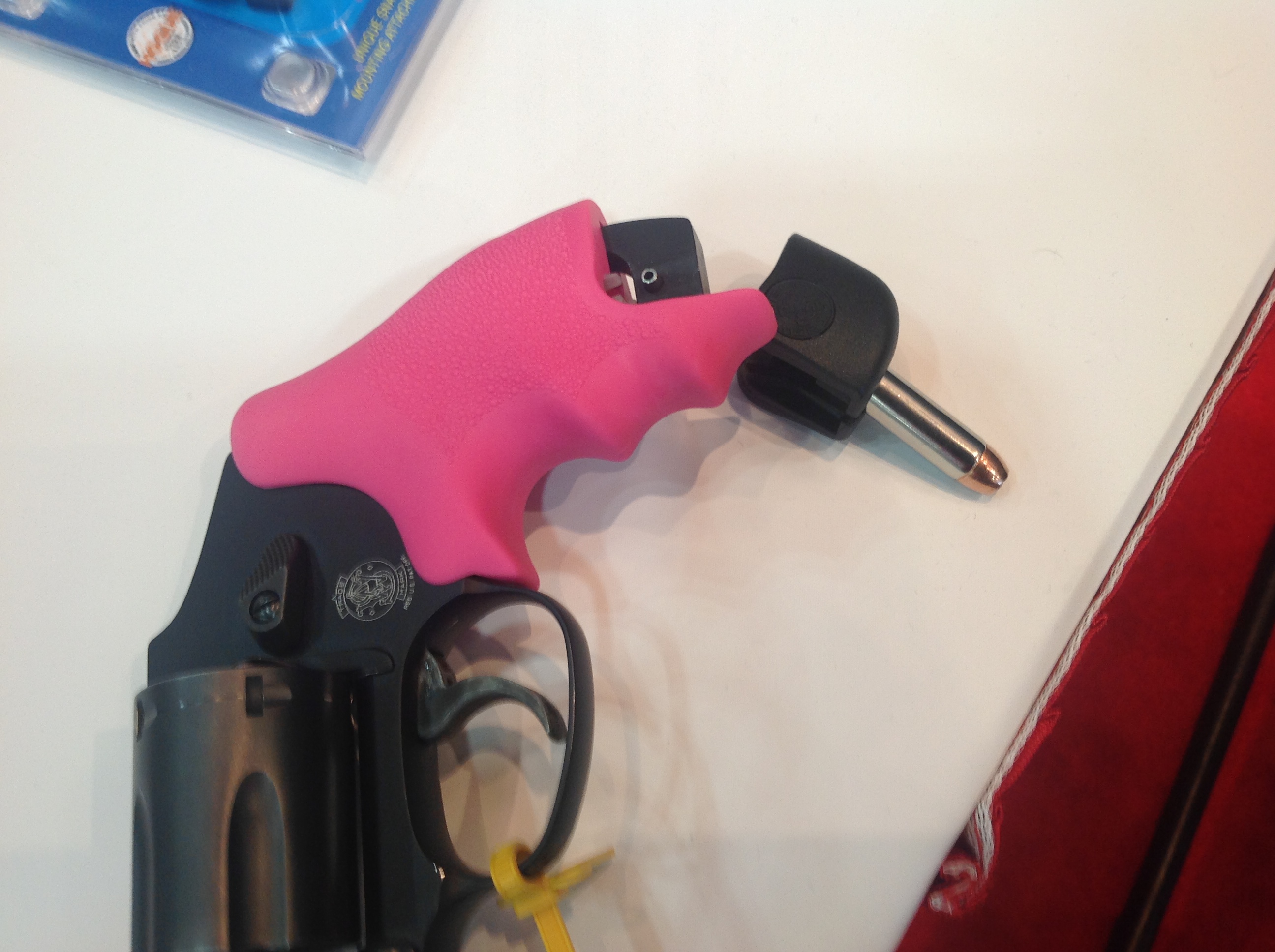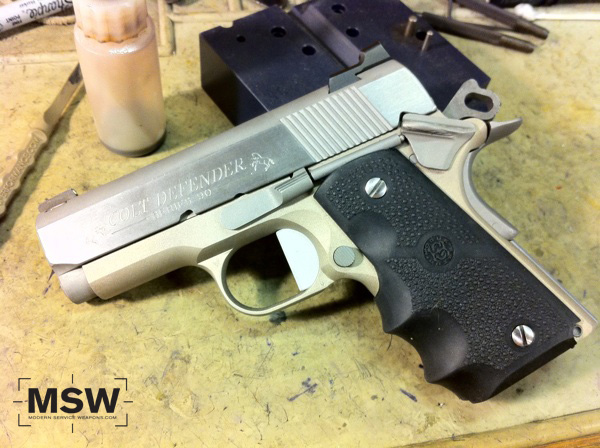I’ve been following Mike Pannone through his writings and videos on the Internet for quite some time now. I enjoy his no-nonsense, performance based approach to training. His drills are challenging and rooted in reality. I particularly like his 15 in 10 Drill, which pushes the limits of speed while keeping a tight accuracy standard. This past SHOT Show, I ran into Mike in one of the hallways and had a nice chat with him. While this was the first time we had met in person, I felt like we were chatting like two old shooting buddies. His real world experience is significant (look it up), but Mike also has a solid grasp of the industry, and therefore understands the pros and cons of each weapon system. Hilton recently attended Mike’s Covert Carry Class and keeps telling me how I have missed out by not yet taking the opportunity to get on the range with Mike. Continue reading
Competition and the Tactical World..the end (Part IV)
Competition vs. the Tactical World: Stage Planning and Wrap Up
So as we head into the final stretch of our exploration on why competition is good (no great) for the tactical world, we have one more area to cover. I’d like to talk about stage planning and visualization.
There are several ways of stage planning so for most of this article I want to focus on USPSA style of stage planning. “Well, what is stage planning?” Good question. In USPSA, at a match, the rules allow competitors up to five minutes to look over a stage, walk through it and air gun (not air guitar) as they walk through. Let’s break down those parts. Continue reading
The Browning Hi Power: Yesterday’s 9mm Service Pistol
Known as the most evolved of John Moses Browning’s pistol designs, the Browning Hi Power is one of the most beloved semi-automatic pistols ever. And why shouldn’t it be? It was designed by the single most influential firearms designer in history, features a double-stack high-ish) capacity magazine, a grip suitable for small hands, and is chambered for the most popular service pistol cartridge in the world.
FIRST LOOK: Taran Tactical Innovations Firepower Base Pads
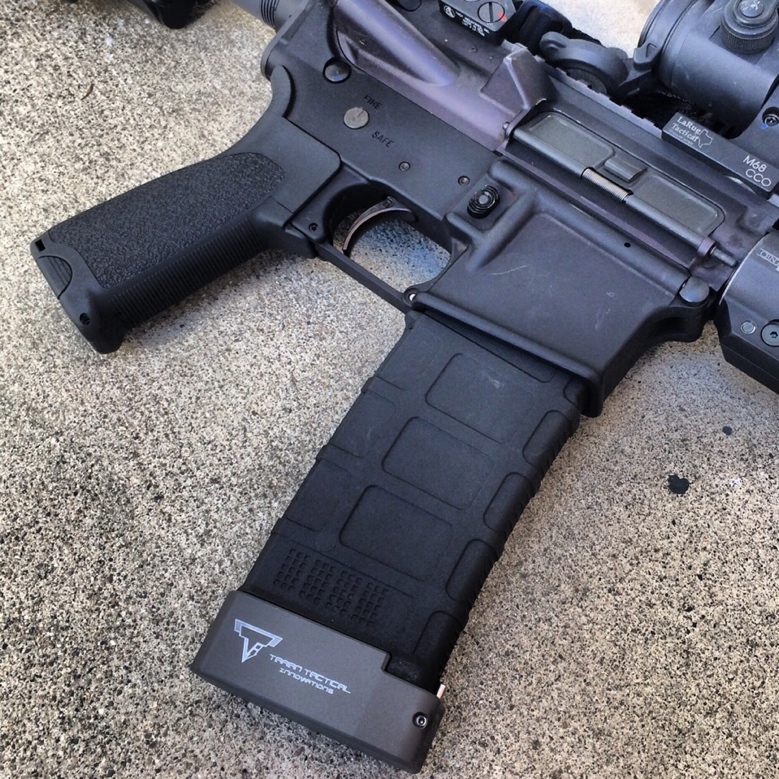
Last week, I ordered several of the Firepower Base Pads for the Glock and M-16 magazines from Taran Tactical Innovations. For those who aren’t familiar with the competition world, Taran Butler is one of the biggest names in USPSA, holding such titles as USPSA National Tactical Champion, and more IDPA, Steel Challenge, and IPSC titles than I can count. Just before SHOT Show, Taran Tactical’s new Magpul Firepower Base Pad caught my attention. It adds less than an inch of length to the magazine but adds five rounds of capacity to the 30-round box. Since I was ordering stuff anyway, I also added a couple of the Glock Base Pads to my cart. A few days later, I had a box waiting for me in the mail.
THE POLICE MARKSMAN : STILL A PLACE TO “GET SOME”
I previously noted in an MSW post the return of The Police Marksman. You can read/download the latest issue, eBook style here. In addition to the long running “Officer Down” column (the John Schoen incident), the current issue has articles on the XDM 5.25, shooting competition, use of extended magazines, and learning the mechanical offset of lasers. Every issue contains good stuff for LEOs; the subscription price cannot be beat, so there is no $$$ excuse for not reading.
SOLO INTERVENTION OF THE LONE “ACTIVE KILLER” : FANTASY OR REALITY? [PART TWO]
At the end of part one, I suggested a solo intervenor’s mission is driven by two goals: (1) Interrupting, containing, and deactivating the active killer, and; (2) communicating and identifying oneself as the “good guy” so victims, witnesses, and responding LEOs do not mistake an intervenor (you) for the active killer. I didn’t suggest which of the two was more important. That depends on the intervenor’s own analysis of the SHOULD and MUST. I also purposely failed to mention something obvious: Time spent on the second goal delays implementation of the first, thereby diminishing the chance of an earlier, more lives saved intervention. Continue reading
SOLO INTERVENTION OF THE LONE “ACTIVE KILLER” : FANTASY OR REALITY? [PART ONE]
This post started out in draft (many months ago) as a review of the Panteao Productions video by Paul Howe, “Civilian Response To Active Shooters.” (Click on the image to read some of Paul Howe’s background).
 I was a bit uncomfortable some might think I had strayed from my lane as I have no military combat experience, and neither my training nor my life or death experiences resemble Paul Howe’s. Thus, I changed this post to pose and (hopefully) answer the title question. I think a better term to describe the dynamic incidents addressed is “active killer,” so I use that term instead of the universally used term “active shooter.”
I was a bit uncomfortable some might think I had strayed from my lane as I have no military combat experience, and neither my training nor my life or death experiences resemble Paul Howe’s. Thus, I changed this post to pose and (hopefully) answer the title question. I think a better term to describe the dynamic incidents addressed is “active killer,” so I use that term instead of the universally used term “active shooter.”
I know Paul Howe only by reputation, his videos, and the material he and others have posted on the internet about his classes and training facility, CSAT. If I had a training “bucket list,” a week or two at CSAT would be on it. Real operators I know respect him, his abilities, and doctrine. Paul’s video provides basic insight into civilian mindset, gear, and tactics appropriate to intervene in an active killer incident. Obviously, a safer intervention tactic would be simply to have Paul Howe with you and let him do the heavy lifting. You would stay out of the fight, help with the evacuation of innocents, and provide direction to sworn first responders (most importantly, describing the armed and qualified civilian responder who already entered and was in response mode). Unless you are Mrs. Paul Howe, that’s fantasy. Continue reading
The Redi-Mag
You can never have too much ammunition. At least, that is the mentality of many users that wish to strap on as much ammunition to their rifle as possible. While I typically like to have my carbine as light as possible, there are legitimate reasons to attach a spare magazine to the gun. I have seen many different ways to accomplish this, and some are better than others. But before we go into the options, let’s look at whether or not you need to have a spare magazine attached to the rifle. Continue reading
Competition Vs. The Tactical World part Tres…
Shooter ready? Stand by…”beep!” And they’re off…Bam, bam, run, bam, bam. Crash..burn..oh crap.
What happened? 4 misses, 2 no shoots..but a smoking time. So what? Yeah, you were fast, but what did you hit? But I was fast…Heard that scenario many times at matches. But what about this one?
“Today in NYC, three bystanders were shot by police as they attempted to take down a murder suspect in front of the Empire State Building (true story).” I don’t want to get into specifics on the brave LEOs facing an armed killer, since 20/20 hindsight is always easier than being there. However, a lot can be learned from these kinds of events.
WARNING: The following is based on my opinion and like your opinion, we all got one. I ask you to check your ____ and continue to read. YMMV… Continue reading
Are You REALLY Doing It Right?

Are we treating the standing targets as “non-shoots” or as true innocent bystanders and applying all the basic safety rules?
At our last training day, Wayne Dobbs and I ran into a little problem. After a solid day of shooting a variety of tough drills and courses, we decided to add a little “competition” to the end of the day. We recently began running a pretty good little drill of 2 hits on a 10” plate at speed and then transition to an 8” plate for a single hit. We decided to now run this on a rack with a 10” plate and two separate 8” plates. To make things a little more interesting, we added two “innocent bystanders” between the targets. We also added a couple of rules. You could not violate the four basic safety rules. This meant that on the transition from the various plates across the innocent by-standers, you could not have a finger on the trigger, and the muzzle could not cover the non-shoot targets. After a couple of runs, we just put the timer away. It was insanely hard to not cross those non-shoots and to get that finger onto register. It took a lot of work to try to do this “right” and not necessarily “fast”. We also started moving to offer up better shots to minimize the risk to the non-shoots. Continue reading
MAY/MUST Questions Answered Correctly. . . Shoot First, Live
There is a saying (often attributed to Clint Smith of Thunder Ranch): “Some people just need to be shot.” Taking a life is the last thing anybody wants to do, whether in public service as an LEO, or as an unsworn in defense of self or innocent others. But wise and healthy aversion to the awful, distasteful, life-changing (but sometimes necessary) deed does not render that statement silly or merely theoretical, legally or tactically. Continue reading
Safariland QLS Hits The Two Year Mark- Review
A couple of years ago, I really wanted to get my holster away from my body a bit more, particularly when wearing a heavy winter coat. I found that a lot of times, my front sight would snag on the coat pocket on the way up.
So, I did my research and chose to go with the Safariland Quick Locking System versus a simple stand off. At the time, I didn’t realize how beneficial that would be.
I do not have a take home car due to not living in the county that I work, so I have a 10 minute commute to work each day. When I purchased my new Toyota 4Runner, I noticed that the holster was wearing on the leather. So, I started taking the holster and pistol off when in my own vehicle. Thus it has saved on the wear and tear on the leather. Extra added bonus, to say the least.
Some of my coworkers have been hesitant about the connection systems, but I have had zero problems from it. One of the neat features is that you can have multiple attach points and use the same holster in many functions, IE a belt attachment, a drop leg attachment, etc.
I have found this piece of gear to be very durable. The locking mechanism is as strong two years later, as it was the first day I attached it to this holster. I’ve encountered zero problems with it, and have nothing but praise for the system in the context I use it.
Check it out at www.safariland.com.
Hogue S&W Centennial and Polymer Bodyguard Rubber TAMER™ Grips
At the NRA Show, Pat Hogue, of Hogue Inc., dropped by the Apex Tactical/OpSpec Training Booth to chat. Pat noticed Scott Folk’s Smith and Wesson 342 sitting in the cabinet sporting the Hogue pink rubber grips. Pat went over to his booth and returned with his new Hogue S&W Centennial and Polymer Bodyguard Rubber TAMER™ Grips. Pat installed the grips and showed the latest features. It was pretty ingenious.
Finding and deciding on the grips for a Smith and Wesson J Frame isn’t always easy. Hogue has always been a good choice, and at times has been OEM for Smith and Wesson. The new TAMER grips improved on Hogue’s long winning design in a few areas. The first, and most noticeable was the molded plastic “butt cap” that was added to bottom portion of the grips. The first thing that this allows for is a smooth, snag free draw that is not being hampered by the rubber grabbing on a cover garment.
The next thing was the ability to take a round from the gun when you unload (an inert round in this case as we were inside the show), and remove the grips without other tools. Pretty slick.
The rest of the attributes the new grips bring to the table carry over from the classic Hogue design. While a little large for ankle concealment, this style Hogue makes shooting hotter +P loadings a lot more fun. Some of the small bikini grips are just no fun after the first 15 rounds or so.
Lastly, when buying from Hogue, you’re buying from a family company that stands behind their product. There is peace of mind in that alone.
More information can be found at www.getgrip.com.
Part II: Competition vs. The Tactical World
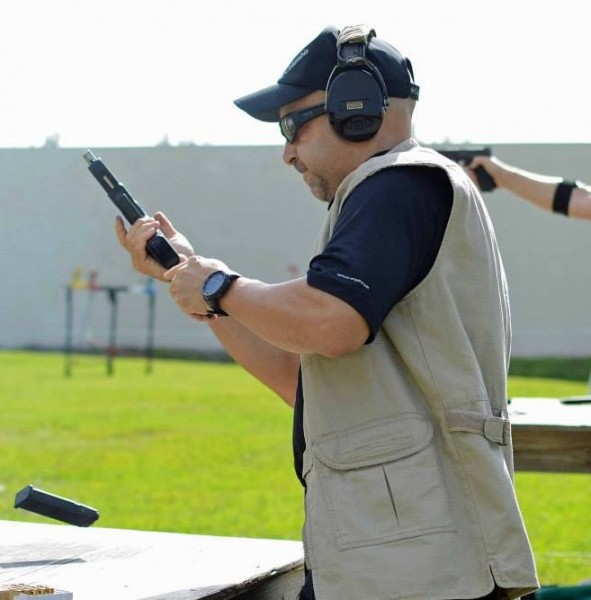 Last time we left off on the crusade to make competition safe for the tactical world, we were making the case that stress introduced into shooting causes interesting results. Being able to work through the stress of the timer will always improve your shooting ability.
Last time we left off on the crusade to make competition safe for the tactical world, we were making the case that stress introduced into shooting causes interesting results. Being able to work through the stress of the timer will always improve your shooting ability.
I just got back from competing in a major international shooting competition where I saw and experienced different levels of stress. The funny thing about stress (aside from actual physical stress) is that it’s only in the mind. That’s right. Stress is in the mind. Stress has nothing to do with shooting. Does it? What constitutes shooting? Lining up the sights and pulling the trigger. No where in that equation does the word “stress” make an appearance. “I hope I won’t miss”, “I suck at steel”, “I hate qualification” etc. All mental problems that have nothing to do with shooting. Being able to turn off the mental stress (conscious mind) and replace it with subconscious skill comes only with repeated practice. However, you can practice and practice by yourself for eternity, but you need a way to test it. That comes from shooting competitions. Continue reading
Making the Compact 1911 Reliable
Earlier today (at the time I wrote this), 1911 guru Bill Wilson posted an excellent article on his blog on the secrets to making a short format 1911 pistol work reliably. Bill explains, “the basic functional difference between a full size (as John Browning designed it) 1911 pistol and a compact version with a 4.25″ or shorter barrel is slide mass and speed.” The point of the article was that these guns can indeed be made to run reliably if you know what you’re doing. The key lies in controlling spring weights, slide speed (hammer spring and firing pin stop geometry), a carefully tuned extractor, and careful ammunition selection. Follow the right formula, keep up on your preventative maintenance, and you can have a reliable compact 1911 (assuming it was set up correctly to begin with.)



